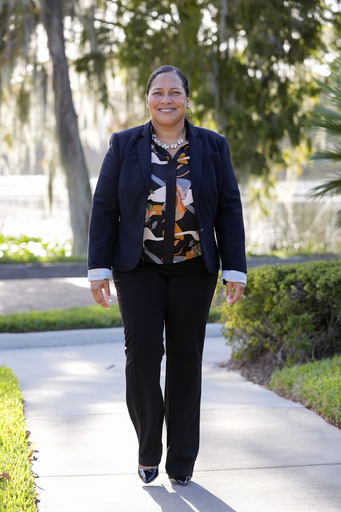
HAINES CITY, Fla. — Just a few years ago, the charm of Polk County revolved around its citrus production rather than its growing population. Situated between Tampa and Orlando, this region, known as Florida’s citrus capital, has historically cultivated vast expanses of citrus trees, producing the highest quantity of citrus boxes statewide. However, a significant shift occurred last year, with the county experiencing the highest influx of new residents in the U.S., welcoming nearly 30,000 newcomers.
The transformation is evident as former citrus groves are being cleared to make way for housing developments and big-box retail stores, potentially leading to the merging of the two metropolitan areas into a region unofficially termed “Orlampa.”
This trend signifies a broader movement occurring across the nation this decade, characterized by the emergence of distant exurbs. These suburban communities located on the outskirts of major metropolitan areas—some over 60 miles (97 kilometers) from city centers—have recorded some of the fastest population growth rates, as reported by the U.S. Census Bureau. Notable examples of these fast-growing neighborhoods include Anna near Dallas-Fort Worth, Fort Mill near Charlotte, Lebanon close to Nashville, and Haines City in Polk County.
Residents like Marisol Ortega find themselves facing long commutes, with some traveling up to an hour and a half to work. Despite the distance, Ortega, who resides in Haines City about 40 miles (64 kilometers) from her workplace in Orlando, values her tranquil home life. “I love my job. I love what I do, but then I love coming back home, and it’s more tranquil,” she shared.
The COVID-19 pandemic has intensified this trend of migration to more remote areas, according to findings from the Census Bureau. Skyrocketing housing prices have compelled many to seek more affordable living options further from urban centers, while the rise of remote work capabilities has enabled individuals to perform their jobs from home several days a week.
Over the past five years, the Hispanic population in Polk County has surged from 20% to over 25%, largely fueled by Puerto Rican migration post-Hurricane Maria in 2017 and the subsequent relocation of residents from New York during the pandemic. The diversity of the county continues to evolve, with the percentage of non-Hispanic white residents decreasing from 61% to 54%. In addition, the area’s population has become more educated and affluent without a substantial shift in its Republican political inclination.
Yeseria Suero, who moved her family from New York to Polk County at the beginning of the decade, fell in love with the area’s lifestyle and lower cost of living during a visit. Although she faced some cultural adjustments—such as early restaurant closures and a plethora of barbecue spots—Suero has integrated into the close-knit Hispanic community, where her children are active participants in various sports leagues. “My kids now say, ‘Yes, ma’am,’” she remarked.
The impact of recent hurricanes and outbreaks of citrus diseases in Florida have increased the appeal of selling citrus farmland to developers, who are then constructing new homes or commercial spaces. Over the last decade, the area dedicated to citrus farming in Polk County has diminished significantly, from 81,800 acres (33,103 hectares) and nearly 10 million trees in 2014 to 58,500 acres (23,674 hectares) and about 8.5 million trees by 2024, based on federal agricultural data.
According to Matt Joyner, CEO of Florida Citrus Mutual, a growers’ association, “It hasn’t been a precipitous conversion of citrus land for growth, but certainly, you see it in northern, northeastern Polk.”
The nearby city of Anna, Texas, located over 45 miles (72 kilometers) north of Dallas, exemplifies similar migratory patterns. It was the fourth-fastest growing city in the U.S. last year, witnessing a one-third increase in its population during the 2020s, reaching around 27,500 residents. Like Polk County, Anna has grown older, wealthier, and more diverse, with nearly 60% of households having moved in since 2020, as reported by the Census Bureau.
Schuyler Crouch and his wife initially sought to purchase a home in a more central exurb like Frisco, where Crouch grew up. However, soaring prices due to population growth led them to find a more affordable option in Anna. Although they commute to Frisco, about 30 miles (48 kilometers) away for work and leisure, Crouch notes that the expansion of exurban areas continues to push boundaries further north, making previously affordable neighborhoods increasingly unattainable. “The next exurb we are going to be living in is Oklahoma,” he humorously predicted.
